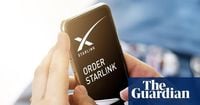Virgin Media O2, one of the UK's leading telecom operators, has announced a landmark partnership with Elon Musk's Starlink to launch the country's first satellite-to-mobile network, a move poised to dramatically reshape mobile connectivity across Britain. Dubbed "O2 Satellite," the new service will harness Starlink’s constellation of more than 650 Low Earth Orbit (LEO) satellites to connect directly to customers’ smartphones using a portion of O2’s licensed spectrum. This innovative approach aims to close stubborn coverage gaps in rural and remote areas—those frustrating "not spots" where traditional mobile networks often falter.
The collaboration marks a strategic shift in the British telecom market, as reported by Invezz. The initiative is set to launch in the first half of 2026, initially offering basic messaging and data features. Over time, the service will expand to support additional applications, including maps, location services, and potentially data-heavy functions such as voice calls, social media, and video streaming. The idea is simple yet ambitious: allow users to stay connected whether they're hiking in the Cairngorms, sailing off the coast, or simply living in parts of the countryside where mobile coverage has long been unreliable.
Virgin Media O2 CEO Lutz Schüler described the partnership as a "UK-first innovation," highlighting the company’s ongoing commitment to network investment. "This UK-first partnership is another example of Virgin Media O2 innovating to provide a better experience and peace of mind for our customers on top of the £700 million we are already investing in our mobile network this year," Schüler said. For Virgin Media O2, the move is a logical extension of its efforts to modernize its brand and reinforce its reputation as a forward-thinking telecom operator, especially after years of trailing rivals in customer retention and technological innovation.
According to the UK government, the partnership is also a testament to the power of private sector innovation to deliver tangible benefits nationwide. Telecoms Minister Liz Lloyd commented, "This partnership demonstrates exactly how private sector innovation can deliver real benefits for people across the UK, supporting our mission to drive growth and ensure no community is left behind. Whether you’re running a farm in Cumbria or hiking in the Cairngorms, you’ll soon have the peace of mind that comes with reliable coverage."
For Starlink, operated by Musk’s SpaceX, the agreement marks its first telecom partnership in the UK and one of the first direct-to-device rollouts in Europe. Starlink’s direct-to-device technology stands apart from its broadband offerings: instead of needing a user terminal, mobile users will connect directly to satellites using their existing smartphones. Starlink’s Vice President of Engineering, Mike Nicolls, emphasized the transformative potential of the project, stating, "We’re excited to bring a satellite-to-mobile network to the UK with Virgin Media O2. This partnership underscores the importance of Starlink Direct to Cell’s mission to end mobile dead zones and deliver connectivity in remote areas where it wasn’t possible before. Whether it’s checking real-time weather updates, sharing a video with friends, or simply sending a text, people can stay connected when they need it most."
The technical leap is significant. Starlink’s LEO satellites orbit much closer to Earth than traditional geostationary satellites, enabling faster and more stable connections. This gives Starlink a competitive edge in a market that is rapidly heating up, as telecoms across Europe race to bring satellite-based mobile coverage to the public. Assembly Research noted that the partnership "mirrors those telecom operator-Starlink arrangements that already have lift-off in several countries, including Japan and New Zealand." The firm added, "It marks an important milestone in Ofcom’s push to enable direct-to-device (D2D) services in spectrum bands below 3GHz that are currently licensed to operators, while reflecting the regulator’s heightened focus on mobile coverage over the past year."
Virgin Media O2 expects the O2 Satellite service to work seamlessly alongside its existing terrestrial network, automatically connecting users in areas with no signal. The company’s goal is to boost national mobile coverage from 88% to over 95% of the UK landmass within a year of launch, with further improvements as next-generation Starlink satellites go live. Trials are already underway, and a customer rollout is planned for early 2026.
The move comes as part of a broader industry trend toward hybrid connectivity strategies, where terrestrial and orbital technologies are combined to deliver more reliable coverage. This approach is seen as pragmatic, especially for reaching the hardest-to-serve regions. As Assembly Research put it, "For now, we consider satellite an important part of the connectivity puzzle and a pragmatic, complementary way to improve coverage (especially in the hardest to reach areas), rather than as a direct threat to traditional mobile operators." Nevertheless, regulatory hurdles remain. Virgin Media O2 will require changes to its license terms to authorize satellite transmissions and will need to closely monitor and prevent interference with other spectrum users.
The competitive landscape is shifting fast. Other major operators are also entering the satellite-to-mobile space. Vodafone, for instance, has partnered with US-based AST SpaceMobile to provide similar services across Europe, with its chief executive confirming a launch next year. In the US, T-Mobile has teamed up with Starlink to deliver satellite-based connectivity to American users. Starlink’s early advantage, however, lies in its extensive operational network of LEO satellites, which already number over 600.
Beyond the satellite venture, Virgin Media O2 is reportedly in talks to acquire Netomnia, the UK's fourth-largest broadband network provider, in a deal that could be worth $2 billion, according to The Financial Times. The acquisition would combine Netomnia’s infrastructure with that of VMO2 and Nexfibre—a joint venture between VMO2 shareholders Liberty Global and Telefónica, along with InfraVia Capital—creating a fiber network potentially covering eight million homes. If successful, this move would position Virgin Media O2 as the main broadband rival to BT’s Openreach. CityFibre, another major player, has also held discussions with Netomnia about a possible merger involving both cash and equity, signaling a broader wave of consolidation in the UK telecom sector.
The O2 Satellite initiative supports the UK government's broader ambition to eliminate mobile "not-spots," particularly in rural communities and along transportation corridors where connectivity remains inconsistent. With the service expected to go live in 2025, customers will soon be able to test whether space-based networks can deliver on the promise of seamless nationwide connectivity.
As competition intensifies and technology advances, the partnership between Virgin Media O2 and Starlink sets a precedent for how mobile operators might approach universal coverage. For rural users, adventurers, and anyone tired of dropped calls in the countryside, the future of mobile connectivity in the UK just got a whole lot brighter.






